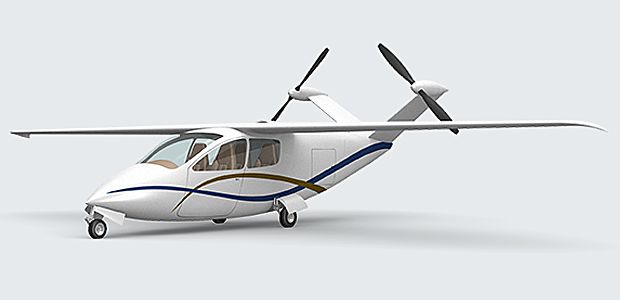According to Tom Neuman in “How I Designed a Practical Electric Plane for NASA: To win a competition, a Georgia Tech student devised a fuel-cell plane to rival today’s best-selling small aircraft”
Fortunately, electric propulsion offers some flexibility that the engineers at Cirrus did not enjoy. Unlike combustion engines, electric motors are compact and efficient. These small, light motors can be placed in many more locations on the aircraft than would be practical for a combustion engine. If applied strategically, this tactic can distribute the power production across more or larger propellers. And the greater the area swept by propellers, the more efficient and quieter they become.
I ran yet another analysis and found a sweet spot in efficiency using two rather large propellers attached to a pair of motors. Instead of mounting them conventionally, on the wing or fuselage, I put them in my design atop the plane’s V-shaped tail, where the airflow is cleaner.
This simple strategy not only improved propulsive efficiency (from 85 to 92 percent), it also benefited the plane’s aerodynamics. Now air could flow more cleanly over both fuselage and wing. And although the propellers were large, putting them on the tail meant that I didn’t have to increase the height (and therefore, weight) of the landing gear. Having short gear made choosing retractable wheels much more palatable, and this reduced drag even further.
When I ran the next analysis, I found that this change, combined with some more optimization, decreased the plane’s energy consumption by another 27 percent. Indeed, this design change had lowered the power demand to the point that it became feasible to fly the plane on hydrogen-powered fuel cells. That’s when I dubbed my V-tailed, hydrogen-powered design “Vapor.”
